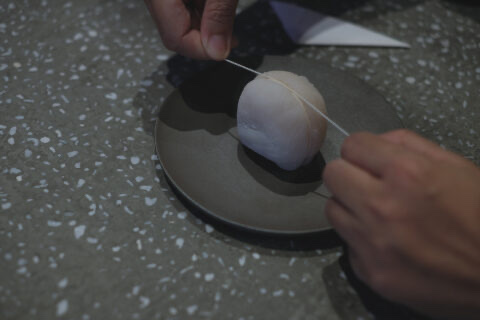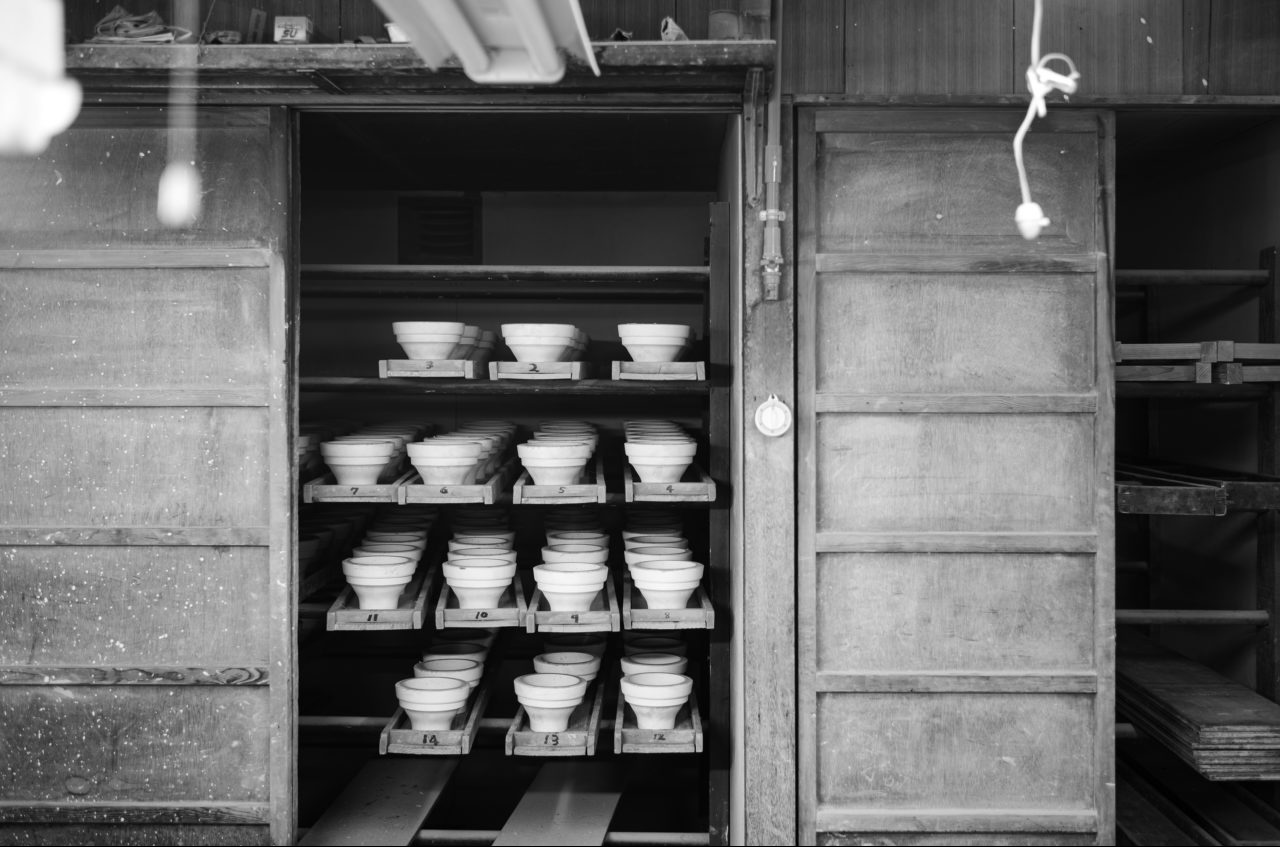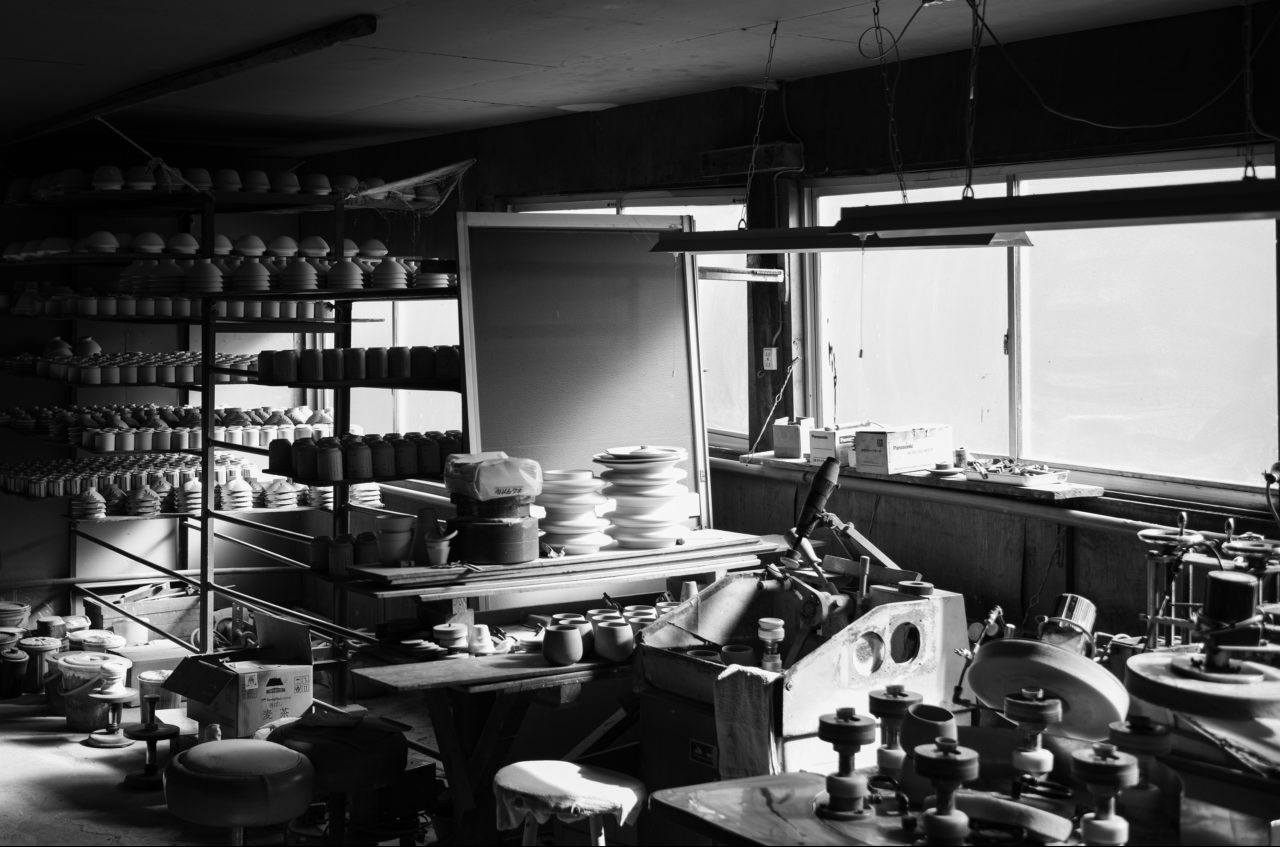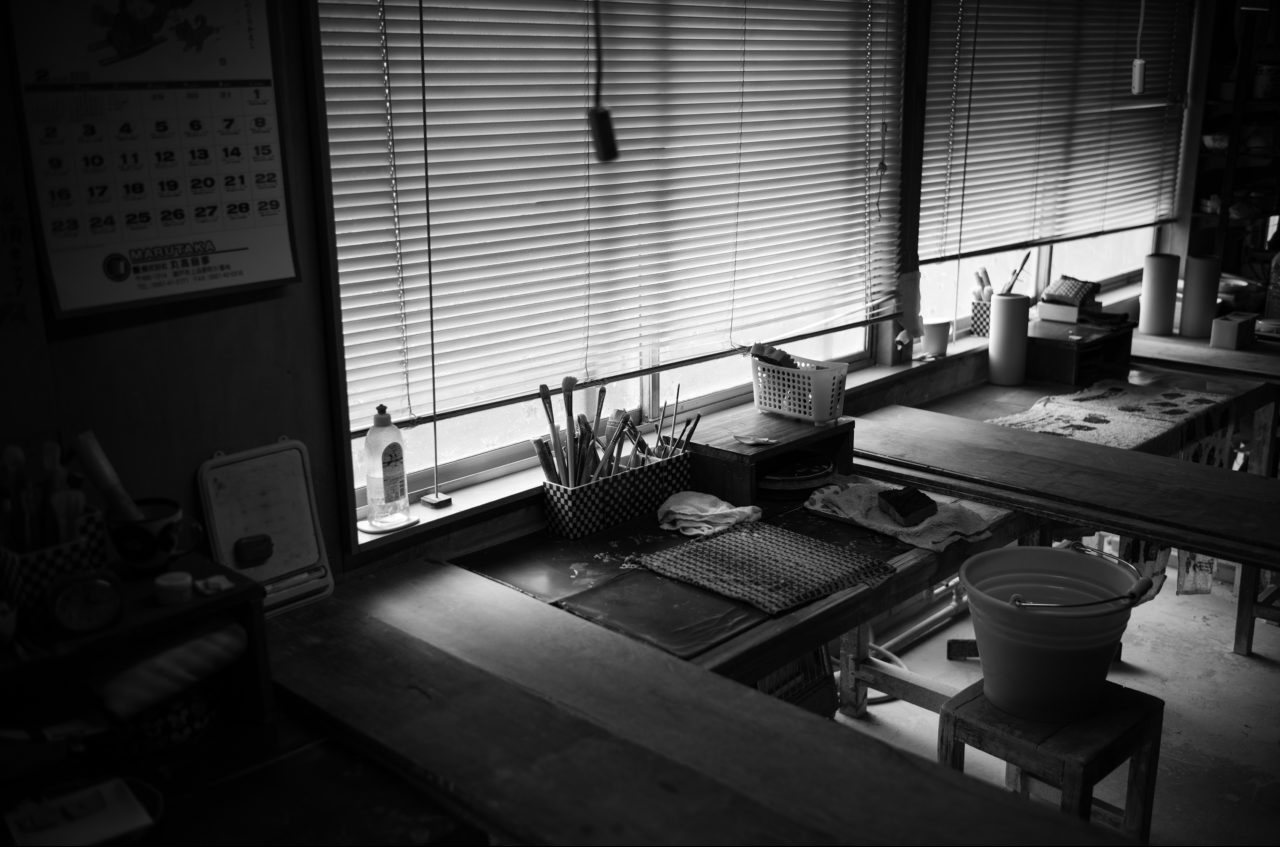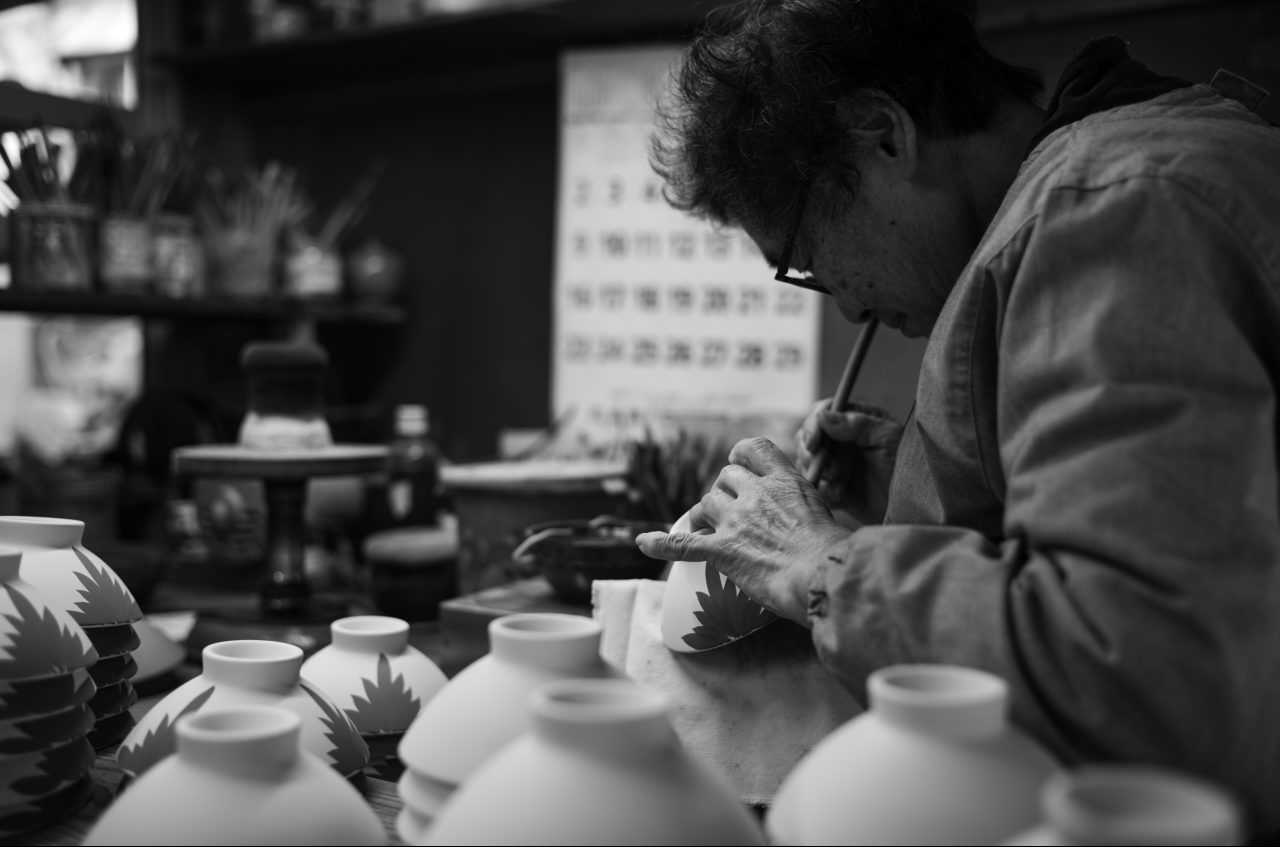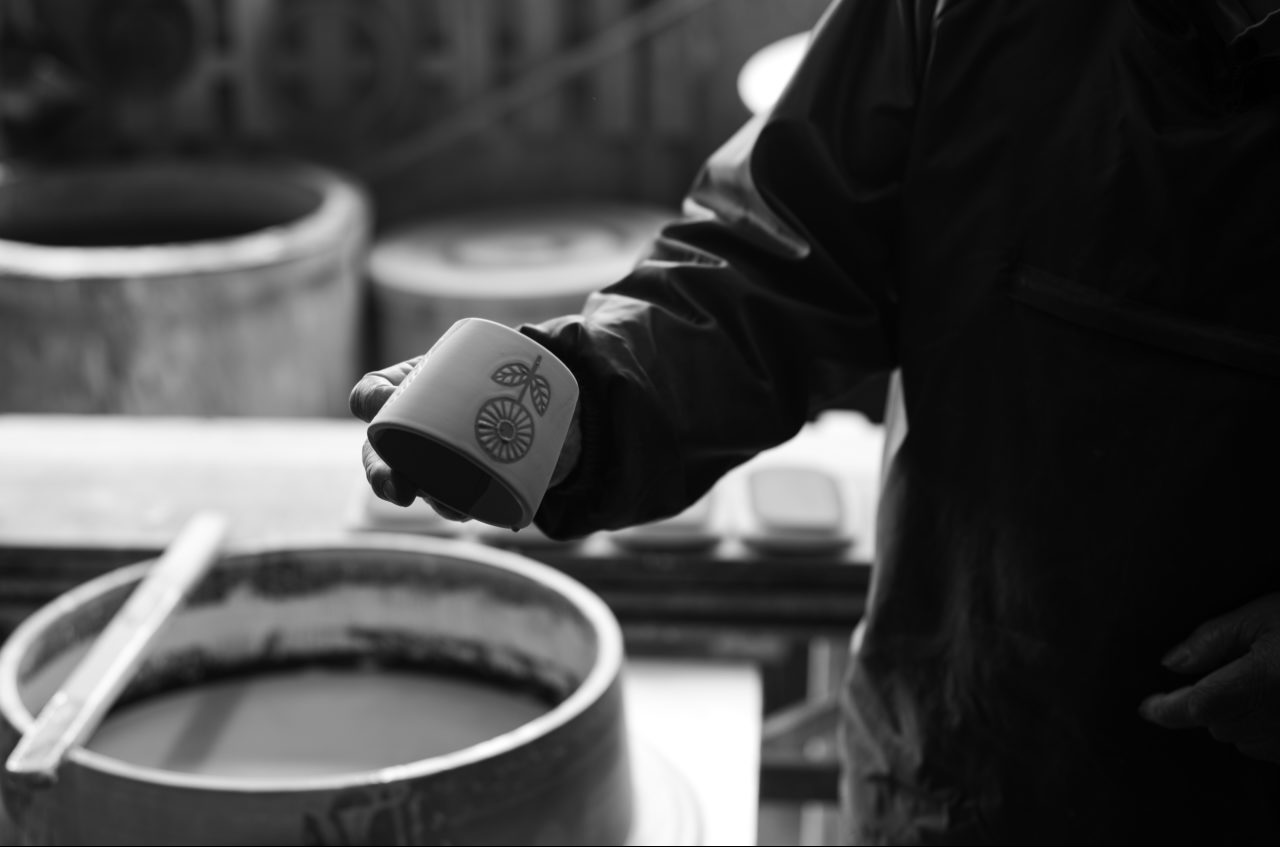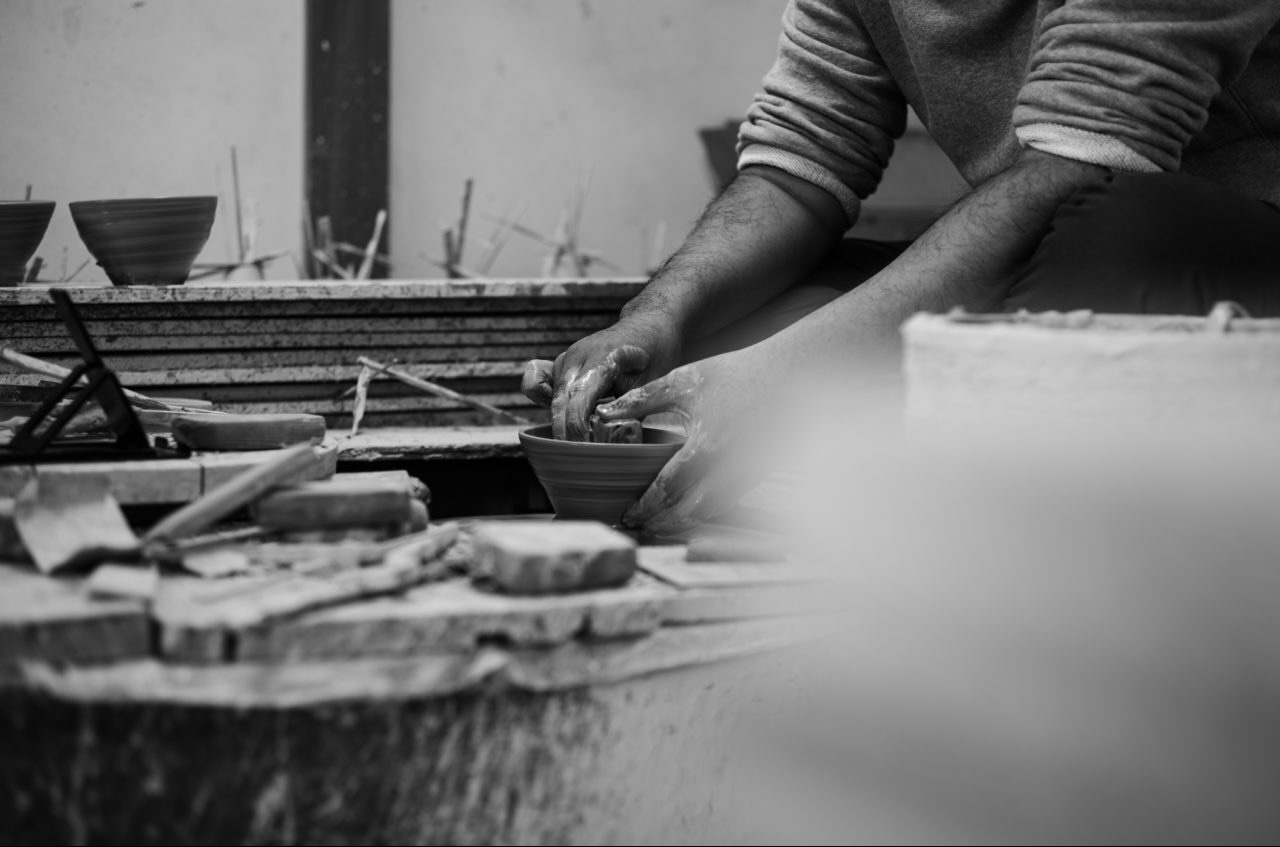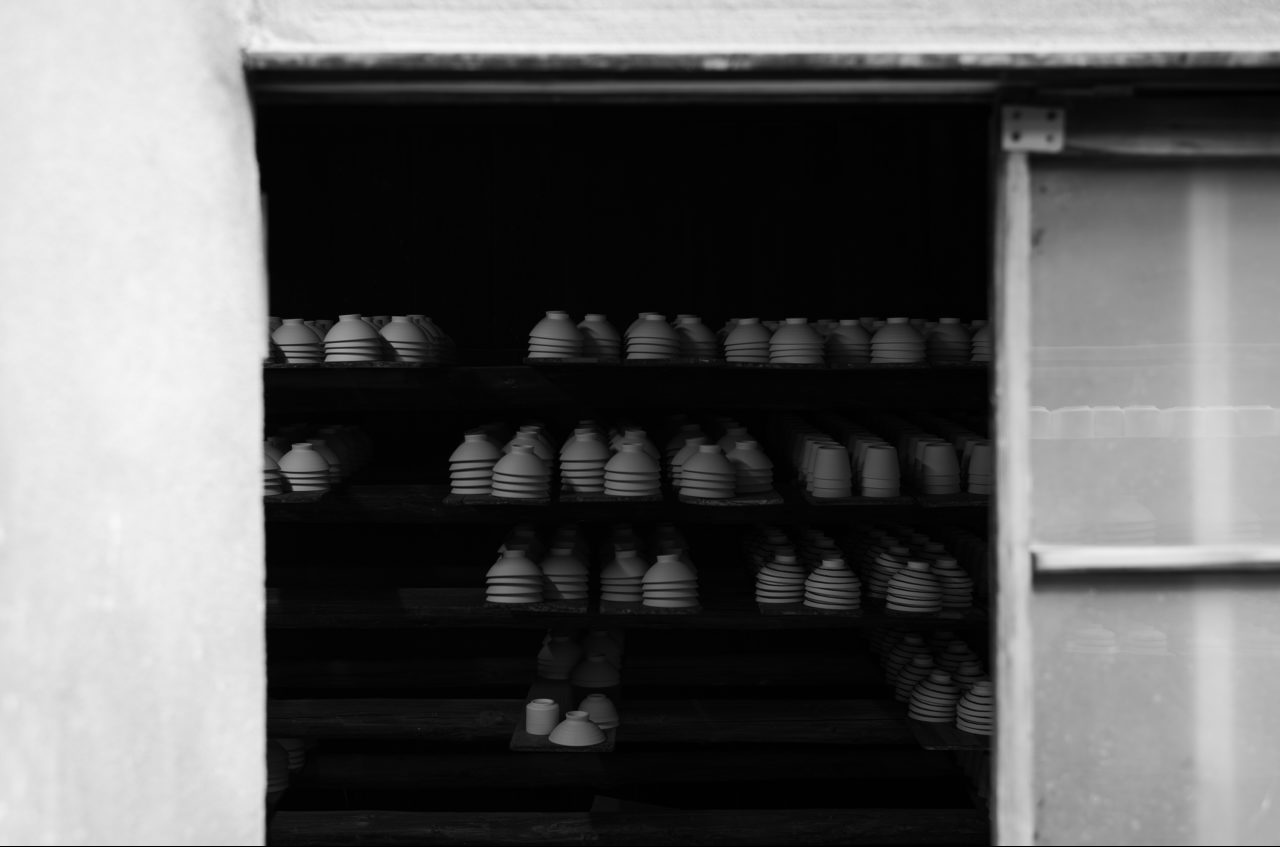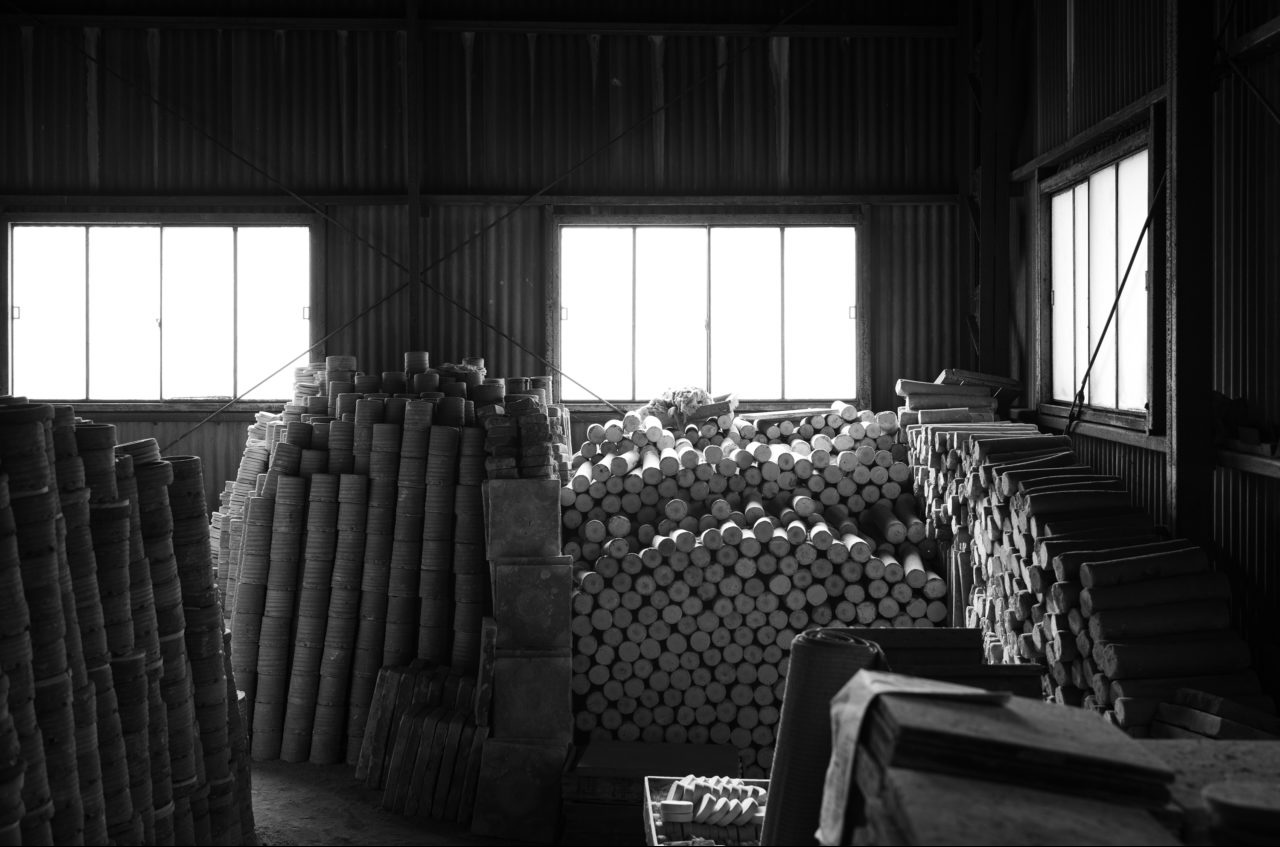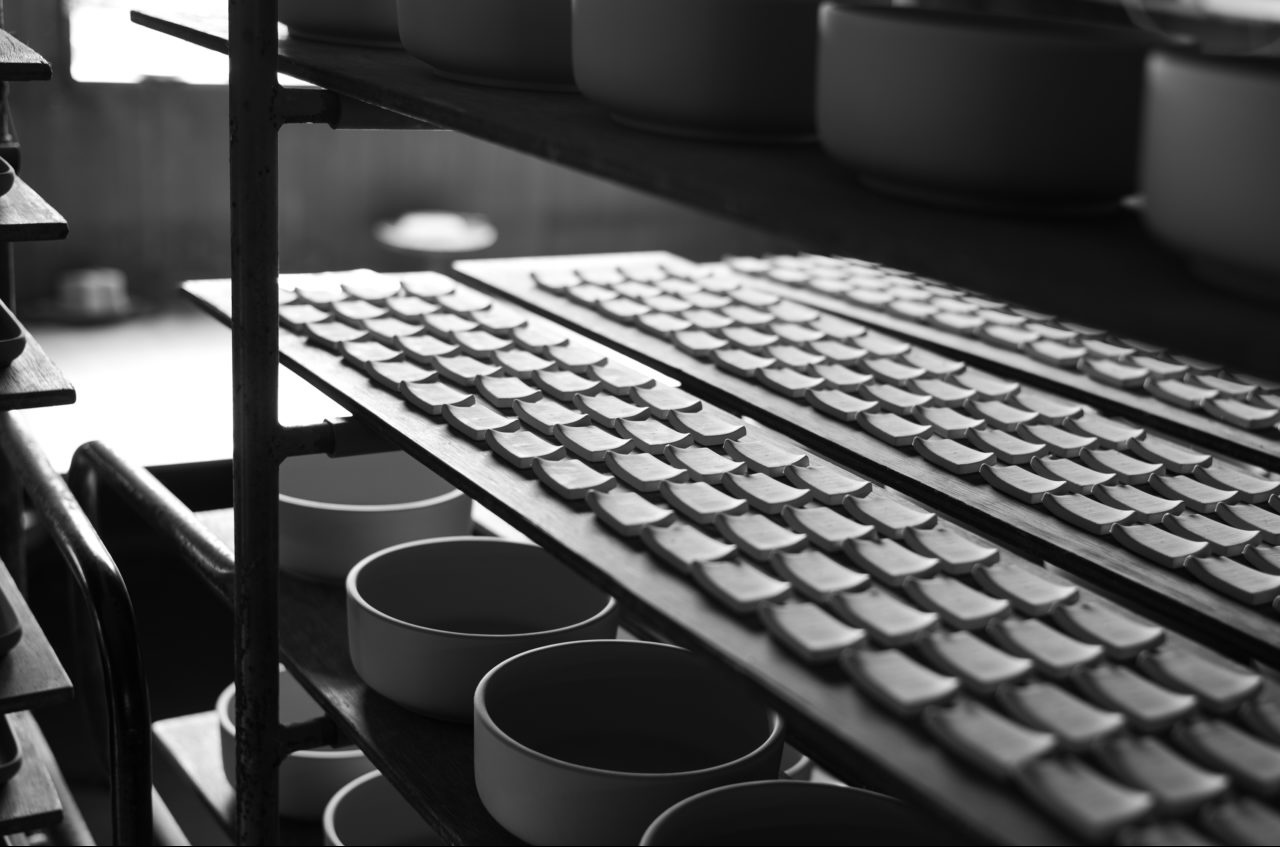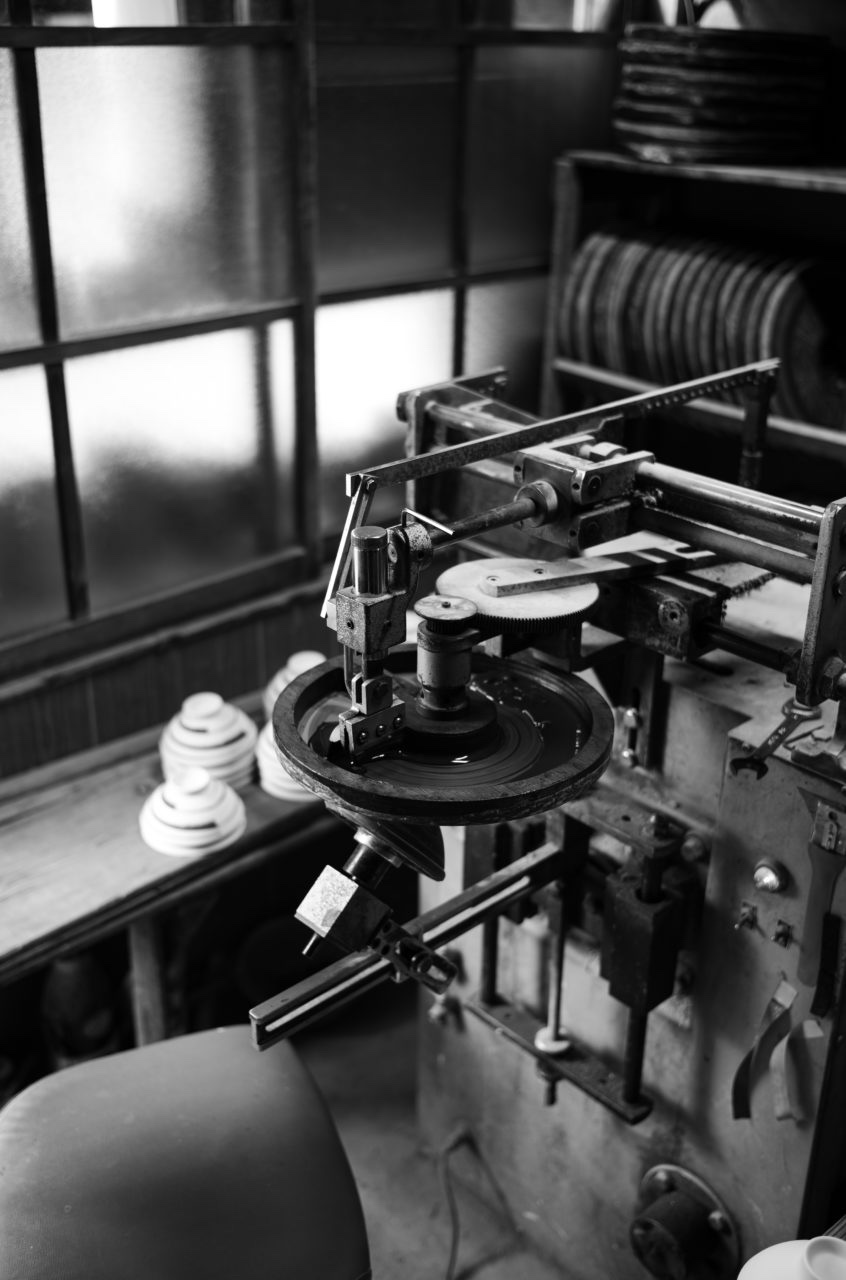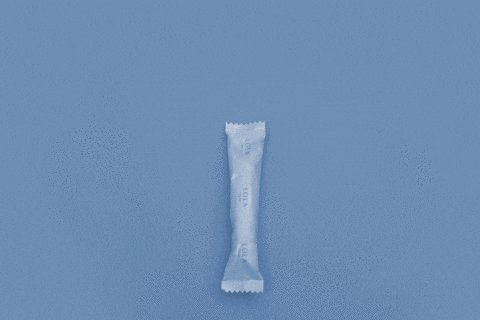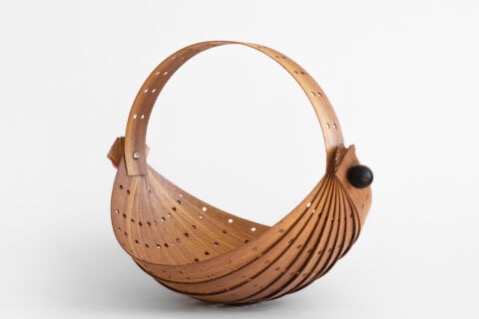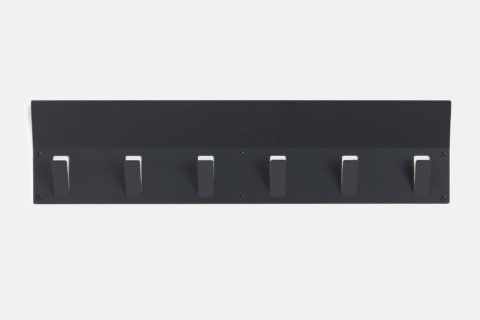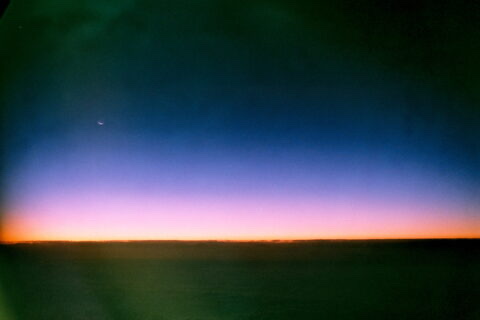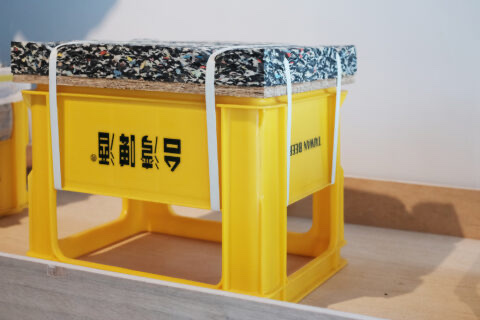O:OBSCURA
P:PAN TANG @MIDWAY
O:可以分享使用Leica M10 Monochrom的感覺嗎?和平時使用的相機有甚麼分別?
P:我認為Leica M10的操作很簡單,機身沒有多餘的按鈕,基本上拿上手便可以使用,不需要花時間去探索它的功能。這部相機是把設計簡化至只專注於攝影方面,拿著相機只需靠直覺地用。它最大的特點是拍攝高質量的黑白照片,即使眼前的東西有很多顏色,但拍攝的時候只會專注在構圖和光暗對比之上,讓人感覺更純粹和真實。
O:你喜歡M10 Monochrom哪個功能或是拍攝效果?
P:M10 Monochrom的功能和以往的相機都差不多,我比較喜歡它拍攝出來的效果,沒有了low-pass filter,影像的畫面更自然銳利,而且光暗的寛容度很高,很光或很暗的東西都能在畫面中呈現出來,很接近菲林相的感覺。另外,它灰色漸變的效果很流暢,不會一下子很黑或很白,中間有不同程度的灰色,加上Leica的鏡頭,令相片更有層次和質感。以往在相片發佈之前都需要作後期的修改,但由於M10 Monochrom的影像處理器造得很好,尤其是對比度很出色,所以大部分照片都不需要作出額外的調整,很多時候只是調較相片的水平線便可以了。
O:你喜歡黑白照嗎?
P:我們以前常用菲林相機拍攝,也偏好黑白相片,因為由自己沖曬,所以過程中可以調節和變化的地方都比較多。後來習慣了使用數碼相機,便很少拍攝黑白照了。事實上,很多的畫面都適合以黑白攝影表達,例如今次造訪瀨戶燒的工房,拍攝工房內的環境、工匠製造陶瓷的過程或是拍攝半完成的陶瓷碗,去除顏色的黑白攝影更能把工匠的專注與物件的純粹表現出來。
O:今次拍攝的照片中哪張最滿意?
P:我最喜歡的一張相片是一間房內的一角,放了一些靜待烘乾的陶瓷碗。或許這不過是陶瓷工房裡一個尋常的畫面,但我在拍攝時已經很喜歡這畫面的氣氛,陽光在前面射進來,令放碗的木架由前至後產生光影的漸變。黑白相片擁有這種表現光暗變化的魅力,並能還原現場的氣氛。
O:你認為旅行和攝影的關係是甚麼?
P:旅行時一定會帶上相機,拍下一些日常的畫面或是旅程中美麗的一瞬間。除了不想錯過每一個尋常的瞬間,也希望藉著相片,讓日後記起這些微不足道的畫面,來補足旅程中每一個值得細味的回憶。
O:你認為旅行用的相機要具備甚麼條件?
P:旅行的時候,大多是拍攝一瞬間的畫面,所以在操作上不需要很多高階的功能,相反地,輕便和方便使用才是最重要。另一方面,相機的外型也不應太高調或是太大部,因為去某些地方很容易會招來賊人的目光,或是被人發現在拍照片。因此,簡單低調的設計也很重要。
O:為什麼喜歡使用Leica相機?常用的型號是?
P:我們都喜歡簡約的設計風格,Leica的相機除了操作簡易之餘,機身的線條、設計都是極為簡約,不會有多餘的按鈕,這是我們選擇Leica的原因。加上,用Leica相機拍出來的相片,有它獨特的氣氛,也許是因為對比度的控制和鏡頭設計的關係,讓人一看便知道是由Leica相機拍出來的相片。我們使用的是上年推出的Leica CL,第一次在巴黎的旅程中使用,出來的效果令人很有驚喜,表現到Leica相機出來的質素和獨特的感覺。加上細機身和拍片的功能很適合旅行使用。
O:拍攝對你來說是甚麼?
P:攝影是甚麼,一下子很難說清楚,但我認為這是眾多的藝術表現手法中的一種,好像畫畫和音樂等,都是抒發情感的方式。攝影除了是記錄旅程中的點滴,我亦想把自己的想法從攝影中體現出來,表達給其他人知道。
O:在拍攝的經驗中,有沒有讓你最難忘的時刻?
P:難忘的多數是一些意外的時刻,例如以前我們經常使用菲林相機,我試過拍完一筒菲林後捲好並放在一旁,忘記了一直沒有沖曬出來。一年後,Rita拿了這筒菲林拍照,她以為這是新的,在她沖曬後才發現兩次不同地方的旅行照片的影像重疊在一起,效果好像雙重曝光一樣。我當然給她駡了一下,但我卻認為這是一個很難忘又有趣的經歷。
Who would first come to your mind when talking about black-and-white photography? Could that be the legendary photographer Peter Lindbergh who just passed away last year? During the 90s when minimalism was prevailing, his black-and-white human portraits have brought a revolutionary impact on the aesthetics of the fashion and photography industries. Through his lens, the supermodels all appeared unpretentiously beautiful. Black-and-white images are perhaps the best way to convey purity and authenticity — the absence of color makes us more sensitive towards the composition and contour of the image, the facial expression and posture of the person in the photo, as well as the change in lighting and shadow. It is, therefore, fair to say that black-and-white images reproduce the actual moment to its authenticity. Leica’s latest product M10 Monochrom has a newly developed high-resolution sensor that can produce exceptionally delicate images in all ISO settings. Images made by this camera are not only vivid but also portray fine details that capture the best of every moment.
Pan, a co-founder of the multi-media platform MIDWAY, recently brought his M10 Monochrom to visit a Seto ware workshop in Nagoya. Through the lens of this black-and-white camera, the interior of the workshop and the daily routine of the artisans became so intriguing and captivating. The texture given by grayscale photography seems to be communicating a powerful emotion to the viewers.
O:OBSCURA
P:PAN TANG @MIDWAY
O: What do you think about the M10 Monochrom camera? How is it different when compared to other cameras?
P: Leica M10 is very easy to operate. It doesn’t come with many redundant buttons. So you know how to use it as soon as you pick it up. I didn’t spend much time getting to understand its functionality. The camera is designed for making good photography so it’s absolutely intuitive to use. Its biggest selling point is the top-notch quality of black-and-white images that it produces, even when shooting something colorful, I can still concentrate on the composition and the contrast. The end products are more pure and authentic.
O: Are there any functions or modes that you like in particular?
P: The functions of M10 Monochrom are similar to other cameras, but I really like the images it produces. With the low-pass filter removed from the camera, the images appear a lot more vivid. It also offers a wide range of contrast, so that the image can capture the extremely bright and dark parts. The images it makes resemble that of a film camera. The transition of grayscale is very smooth and subtle. There are multiple shades of gray in between, you won’t see it changes from black to white abruptly. The Leica lens simply gives more layers and a nice texture to the photography. I used to spend time on post-editing when taking photos with other cameras, but not with M10 Monochrom. The camera processes the images in a sophisticated way with nice contrast. Most of the time, all I need to do is to adjust the horizon.
O: Do you like black-and-white photography?
P: We used to shoot with film cameras. Back in the days, we tended to use black-and-white film as there is more room for adjustment and alteration when we develop the film ourselves. However, we don’t do black-and-white photography so often after shifting to digital cameras. To be honest, there are many images that can be better captured with black-and-white photography. Using the Seto ware workshop as an example, the space itself, the process of pottery making, and the half-finished pottery, they are all better depicted without color. Black-and-white images just highlight the dedication of the artisans.
O: Which is your favorite image taken on this trip?
P: My favorite is the one capturing ceramic bowls being dried up at the corner of the workshop. This is perhaps what you can see in any ordinary ceramic workshop, but I was impressed by the vibe even when I was taking the photo. The sunlight coming from the front gave a nice gradient of shadow on the shelf. The gradual change of light as seen in black-and-white photography can recreate the actual moment. This is definitely the charm of grayscale recording.
O: What is the relationship between traveling and photography to you?
P: I always carry a camera with me when traveling so that I can record the ordinary days or some momentary memory of my journey. I don’t want to miss out on any ordinary moments of my trip. I hope photography can be the means to help me remember all these insignificant bits I have experienced on the road.
O: What makes a good camera for a traveler?
P: I usually take snapshots when traveling, so I don’t really need any advanced functions. On the contrary, I would go for a camera that is handy and easy to use. Cameras that look too fancy or big in size are also not a good option as they might catch the attention of thieves or make people around too aware of you taking a photo. Therefore, I think a simple and low-profile design is also essential.
O: Why do you like Leica cameras? Which is the one that you use the most often?
P: We like their minimal designs. Leica cameras are very user-friendly, they also have a simple outline and style, without any useless buttons. This is why we chose Leica. Photos made by Leica cameras are very distinctive; perhaps it is because of the contrast setting and their lens, it is very easy to tell if an image was made using a Leica camera. We are using Leica CL that was launched last year. The first time we used it was during our trip to Paris, and we were so surprised by the outcome. This camera fully demonstrates the quality and unique texture iconic to Leica. Its small size and video mode made it a very nice choice for a trip.
O: What does photography mean to you?
P: It is difficult to explain what photography is, but I would say it is a form of art, like painting and music. It is a means to express emotion. Photos help to record the happenings in my journey, but I also want to convey my thoughts through photography and have it communicated to others.
O: Are there any memorable moments you have when shooting?
P: Memorable moments are usually unexpected moments. For example, when we were still using film cameras, I once left a roll of film aside and forgot to develop it. One year later, Rita took this roll of film and mistook it as an unused film. When she finally developed the film, the images made from two different trips overlapped with one another and gave a double-exposure effect. She was, of course, mad at me, but I found this experience totally memorable and immensely interesting.
